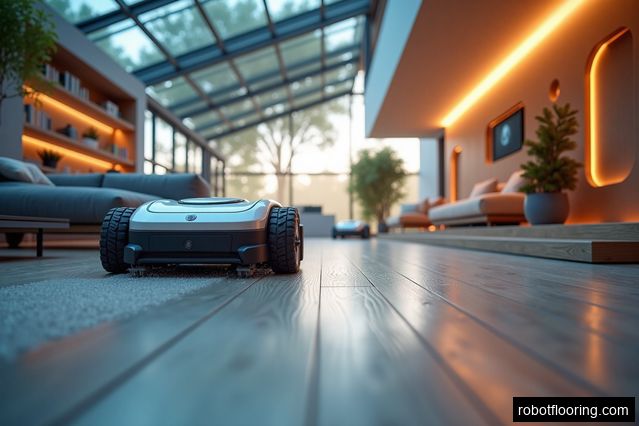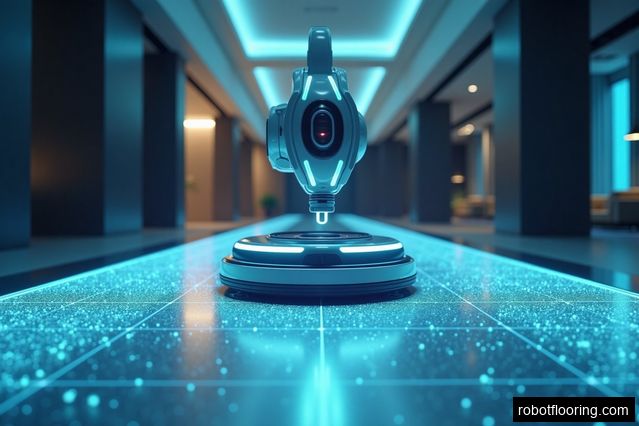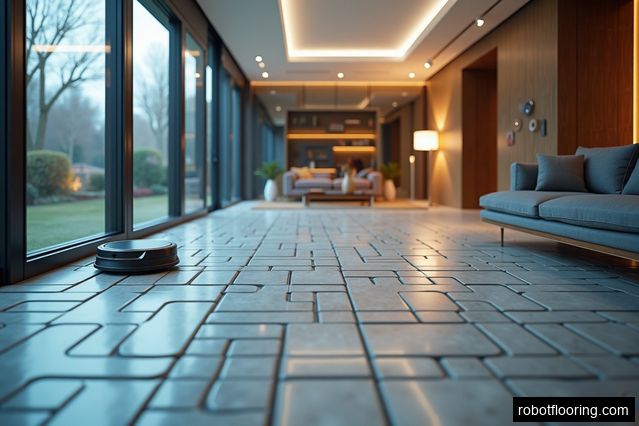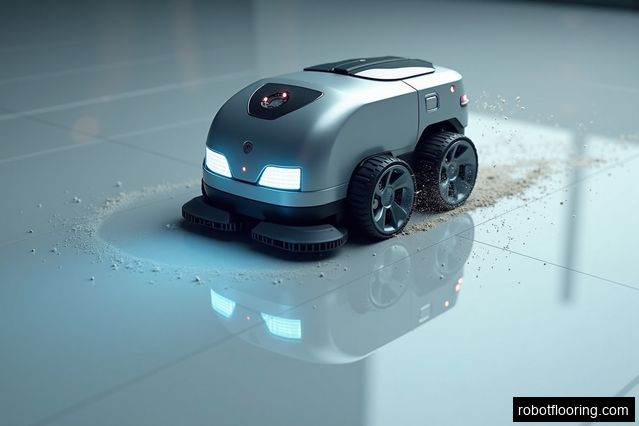Introduction
The flooring industry, a cornerstone of the global construction and home renovation markets, is witnessing a paradigm shift thanks to the advent of smart technologies and materials. Among the innovators leading this transformation, Robot Flooring.com stands out with its revolutionary approach to flooring solutions. This pioneering company has introduced smart, self-repairing materials that promise to redefine our expectations of durability, maintenance, and aesthetics in flooring. The implications of this technology are vast, impacting not only the way floors are installed and maintained but also how they can contribute to sustainable living practices.
Robot Flooring.com's breakthrough lies in its use of cutting-edge materials science combined with advanced robotics and artificial intelligence (AI) technologies. These smart floors are designed to detect damage or wear and initiate self-repair processes automatically, thereby extending their lifespan and reducing the need for frequent replacements or repairs. This innovation is not just a step forward in material technology; it's a leap towards creating more intelligent living spaces. By integrating these smart floors into homes and commercial buildings, Robot Flooring.com is setting new standards for what is possible in the realm of interior design and architecture.
The Technology Behind Smart, Self-Repairing Floors
The foundation of Robot Flooring.com's smart, self-repairing floors lies in a sophisticated blend of polymer-based materials that possess inherent self-healing properties. When these materials detect a breach such as a scratch or small cut, they activate a chemical process that essentially "heals" the damage. This process is facilitated by microcapsules embedded within the flooring material that release healing agents when compromised. The result is a floor that can virtually erase signs of wear and tear over time, maintaining its pristine condition much longer than traditional flooring options.
Beyond the material science, these floors are equipped with sensors and AI algorithms that monitor their condition in real time. This allows for preemptive identification of areas that require repair before they become visible to the naked eye. The integration of AI also enables the floors to learn from patterns of use, adapting their responses to different types of damage or stress. For instance, in high-traffic areas, the floor might bolster its self-repair mechanisms or alert homeowners to potential problems through a connected app. This proactive approach to maintenance represents a significant leap forward in making buildings smarter and more responsive to the needs of their occupants.
Implications for Sustainability and Cost Efficiency
The introduction of self-repairing floors by Robot Flooring.com has profound implications for sustainability in construction and interior design. By significantly extending the lifespan of flooring materials, this technology reduces waste and the demand for raw materials typically associated with floor replacements. Furthermore, the efficiency of materials used not only diminishes the ecological footprint but also translates into cost savings for homeowners and businesses alike. The reduction in maintenance and replacement needs means that the initial investment in smart floors can pay off more rapidly than traditional flooring solutions.
Statistics from early adopters highlight the potential savings: reports indicate up to 40% reduction in maintenance costs over five years compared to conventional flooring systems. Additionally, the use of environmentally friendly materials in these smart floors aligns with green building standards, offering points towards LEED certification and other eco-conscious accolades. This aspect is particularly appealing to businesses looking to enhance their brand image by committing to sustainable practices.
Real-world Applications and Future Prospects
Robot Flooring.com's smart, self-repairing floors have found applications across various sectors, including residential homes, commercial offices, healthcare facilities, and educational institutions. In hospitals, for example, these floors contribute to hygiene and safety by maintaining an unblemished surface that's easier to clean and disinfect. Schools benefit from reduced maintenance costs and enhanced durability amidst heavy foot traffic. Moreover, as smart home technologies continue to evolve, these floors integrate seamlessly with home automation systems, offering users unprecedented control over their living environments.
Looking ahead, the potential for Robot Flooring.com's technology extends beyond current applications. Innovations such as integrating energy-harvesting capabilities — transforming foot traffic into electricity — or incorporating advanced sensors for health monitoring are on the horizon. These developments could further cement the role of smart flooring as an integral component of futuristic smart cities and homes. As research continues and adoption grows, it's clear that the revolution initiated by Robot Flooring.com is just beginning.
Conclusion
Robot Flooring.com's introduction of smart, self-repairing floor materials represents a significant milestone in the evolution of the flooring industry. By marrying advanced material science with AI and robotics technology, this innovation offers a glimpse into a future where our living spaces are more durable, sustainable, and intelligent. The benefits extend beyond mere convenience; they embody a shift towards minimizing environmental impact while maximizing economic efficiency.
In conclusion, as we stand on the cusp of this new era in construction and interior design brought forth by Robot Flooring.com's pioneering efforts, it's evident that the possibilities are as boundless as they are exciting. Whether it's enhancing the aesthetic appeal of our homes or contributing to larger sustainability goals, smart, self-repairing floors are paving the way towards a smarter, greener future. It's an innovation that not only promises to transform our physical spaces but also how we interact with them on a daily basis.










